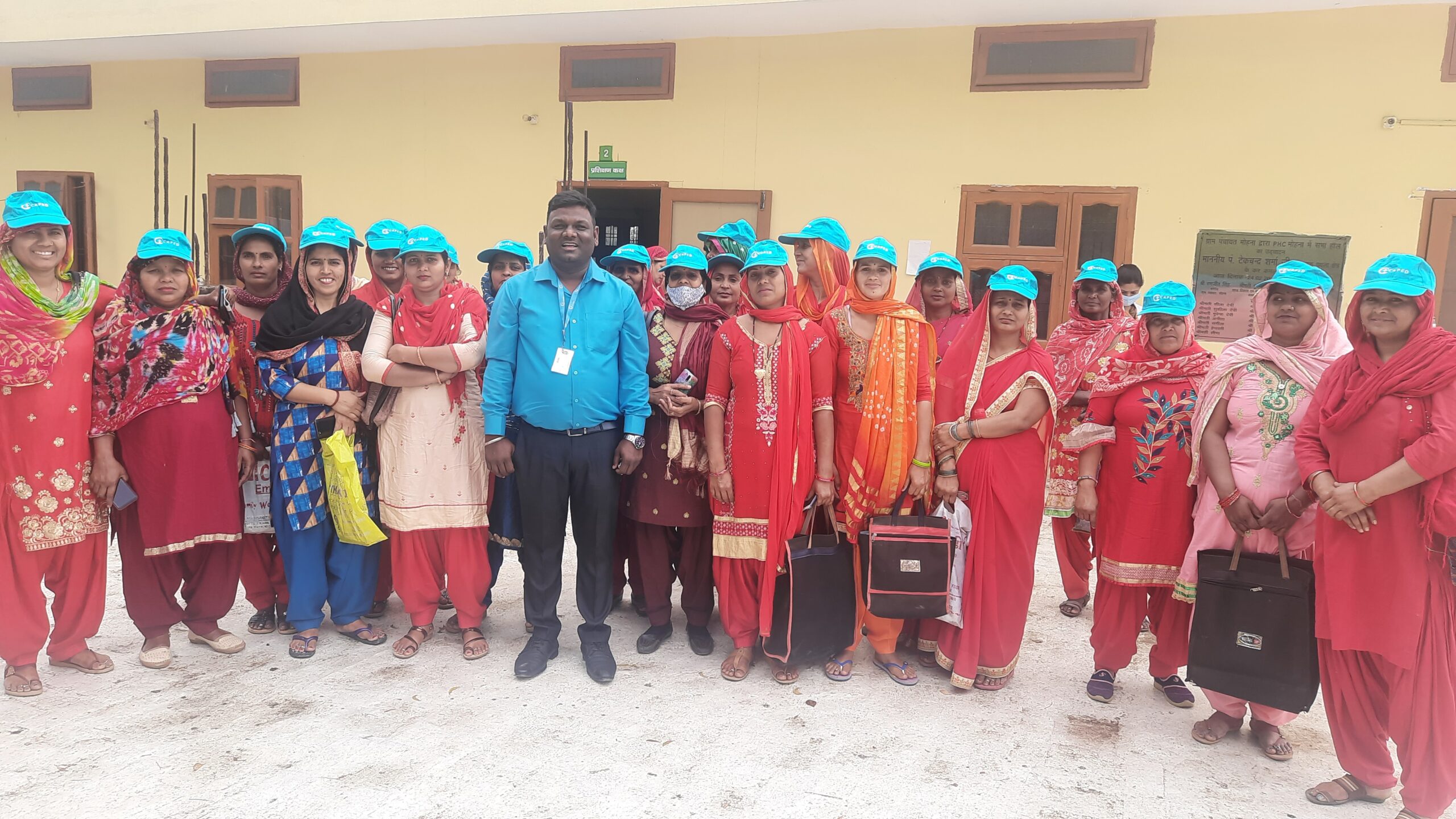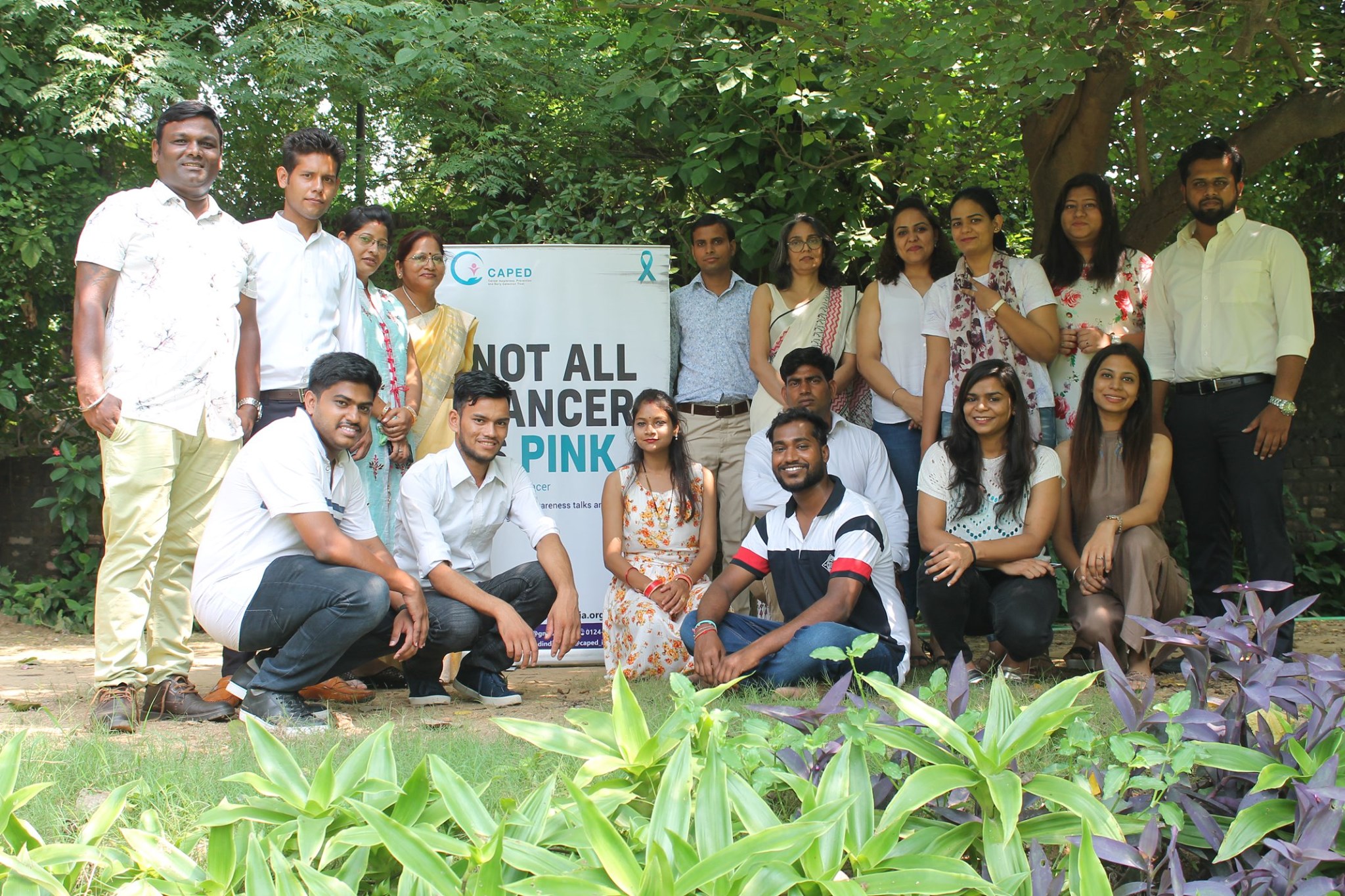
14 Jan Healthcare Intervention at Grassroots Level
Leading a grassroots organization in India is all about communication. Seamless communication from the boardroom to the chaupal, with stakeholders – staff, donors, Government agencies, peers, volunteers and interns – all thrown into the mix. And if the organisation’s work by definition is creating awareness on a particular topic, as is ours at Cancer Awareness, Prevention and Early Detection (CAPED) Trust, stakeholder communication moves to a different level altogether!
CAPED is a community outreach organisation working in the healthcare domain since its inception in 2014. Our core area of work is cervical cancer prevention and early detection. We achieve this through community outreach, awareness and facilitating cervical cancer screening for women from economically weaker sections of the society. So far, we have impacted 28 million people through awareness drives and screened over 14,500 persons across 218 villages.
Cervical cancer kills more women in India than anywhere else in the world. In fact, India accounts for nearly 1/3rd of the global cervical cancer deaths. This, despite the fact that cervical cancer is easily preventable, through screening and vaccination process at the point of care. In India, approximately 1, 32, 000 women are diagnosed with cervical cancer every year. This disease takes the life of 1 Indian woman every 8 minutes. Clearly, cervical cancer is a health emergency that needs immediate attention.

The challenge in a country like India at the grassroots level isit’s high level of diversity. Whether in the strata of society which are different in different states, the very different geographies across the length and breadth of the country, the multiple languages, the various mindsets and behaviours – all/any of these create the challenge of constantly recreating operating modules. One size does not fit all. Not at all, in fact, for rural India, less so for urban India. A donor would rightly expect that if a pilot project were successful it would be an easy job to replicate it in different states and scale up the project. That’s what a B-school would have taught them to expect, right? And that’s the very reason many pan-India projects fail. Restructuring models for scale or even just for repeat-ability has to be a criteria in every project. It is not cost effective, agreed, but it is the only thing that would create impact. Grassroots interventions tailored for the specific location.
Seeding Information
Having been in the field for over 25 years now as a grass roots person across the sectors of education and health, I can tell you that while education projects can be replicated with a minimum amount of alteration, it is not the same for health projects in rural India. Especially preventive healthcare. And more specifically – preventive healthcare for women – that has the least number of takers among women themselves! Among women, strangely, preventive health takes a back seat across urban and rural locations equally. The resistance to action is high and the conversion on a call to action is low even when they are told that this is a disease highly prevalent in India and is also completely preventable!
In a survey conducted by CAPED across 21 states and 1200 women, 73% of women have neither gotten a screening or a vaccination done despite being correctly aware of cervical cancer!
Case in point: Early in our journey we had once shared with corporate HR in a company, discount coupons for a doctor’s visit and a pap test with an esteemed hospital partner. Attached to the coupon was a mail and a presentation talking about cervical cancer prevention and early detection. The redemption percentage was – zero. Not a single coupon was redeemed! These were educated, aware and financially independent women we had thought. They would know the importance of the pap and with the presentation would take an informed decision, we had thought. But seeing the dismal result we decided to change track and ‘push’ some more by conducting an awareness session at the corporate office with a renowned doctor. It took weeks of mails and sensitization by the HR team to get 70 women to sign up for the talk. We had the talk at their premises and the video was then circulated to the other women who were not able to make it to for the session. The coupon date was extended and they were asked to act on the information shared with them. The redemption percentage was – 30%. We were in equal parts excited and disappointed by the results. Excited that awareness sessions work. And disappointed that they only work upto 30%. The hospital though was in awe as they had been quite sure that discount coupons for cervical cancer was never a good idea! So, in all, the result was good because now we knew what we had to do. Create Awareness.
In our survey on ‘Understanding Cervical Cancer Awareness in India’ we have seen that 55% of people who participated had never heard of cervical cancer and out of those who claimed to know about cervical cancer 22% confused it with a disease of the neck.
Which is where our problem statement originates: The lack of awareness around cervical cancer is a burden to the country.
We lose one woman every 8 minutes to cervical cancer, which is a completely preventable disease! What a waste of life.
We started CAPED with the intention of spreading awareness and conversation around cervical cancer. Awareness sessions work. They save lives. Seeding information (Ref: Prof Banerjee in his Nobel prize winning paper on poverty) is not only for the poor. It covers lack of information at any level of society. The lack of conversation and information on cervical cancer in India is appalling. Communicating information in a manner that can lead to conversation and discussions around cervical cancer and its prevention is a core pillar of what we do at CAPED.
Access to & Availability of Preventive Healthcare
In the survey on Cervical Cancer Awareness we learnt that 45% of people surveyed were aware of cervical cancer and 59% of those were aware of screening tests but only 20% of those aware had actually taken a screening test.38% of them said that they didn’t get a screening done because it wasn’t ‘strongly’ recommended by the physician.
Preventive healthcare needs to be ‘strongly’ recommended. Trust and an assurance of security is what will increase uptake of preventive care in our country, even in urban areas. Doctors need to make time to build that trust factor with their patients if we want to eliminate diseases such as cervical cancer.
In the process of creating awareness on cervical cancer in rural India, we realized that in parts of society the call to action – get yourself screened for HPV infection – was not possible as women did not have access to screening nor could they afford the private tests that were available.
This was when we started free mobile screening camps for rural and economically weaker sections of society. With support from donors and partners we have successfully screened over 14000 women in the last 4 years (Not counting 2020/21 as field activities have been restricted due to COVID protocol) With ground experience spanning over 6 years we started advocacy with local and district administrations to increase access and availability of screening modules for women in remote areas. It involved training and awareness of community healthcare workers as well as resource management processes and largely we have seen that there is will and intent in healthcare departments but, as I stated earlier, adapting to specific diversities is required and that flexibility is not available to last mile healthcare providers. High-level advocacy and policy change that decentralizes and allows for flexibility is needed.
Patient Care
But the story doesn’t end here. It’s not like awareness and screening would solve the problem that is cervical cancer elimination, we realised.
Once screened, the women with an abnormal report needed further diagnosis and probably early intervention or cancer treatment post that. This required three, sometimes four visits to a clinic even before the actual treatment started. Not many women were willing to take this on. And not many women had adequate family support to be able to do it even if she wanted to. In attempting to address this area of the problem CAPED started the Patient Navigation Program. We ensured the 2nd level of diagnosis and the start of treatment was streamlined and easily available to the women who were willing. Counseling and support to women resisting treatment is still an area we are working on but we have seen enough success to continue to try and fight current mindsets.
Continuum of care for cervical cancer elimination is the need of the hour.
The WHO’s Global Strategy for Cervical Cancer Elimination states that 90% girls should be vaccinated for HPV by the age of 16, 70% women over the age of 30 should be screened for HPV and 90% of the women with abnormal results should have access and availability to treatment.
Currently India has no cohesive strategy for elimination of cervical cancer and the resources that do exist are scattered and being conducted in silos.
It is time we all came together to create conversation, strategies and solutions for a cohesive fight against cervical cancer. There is no other way we can fight this completely preventable fight.


